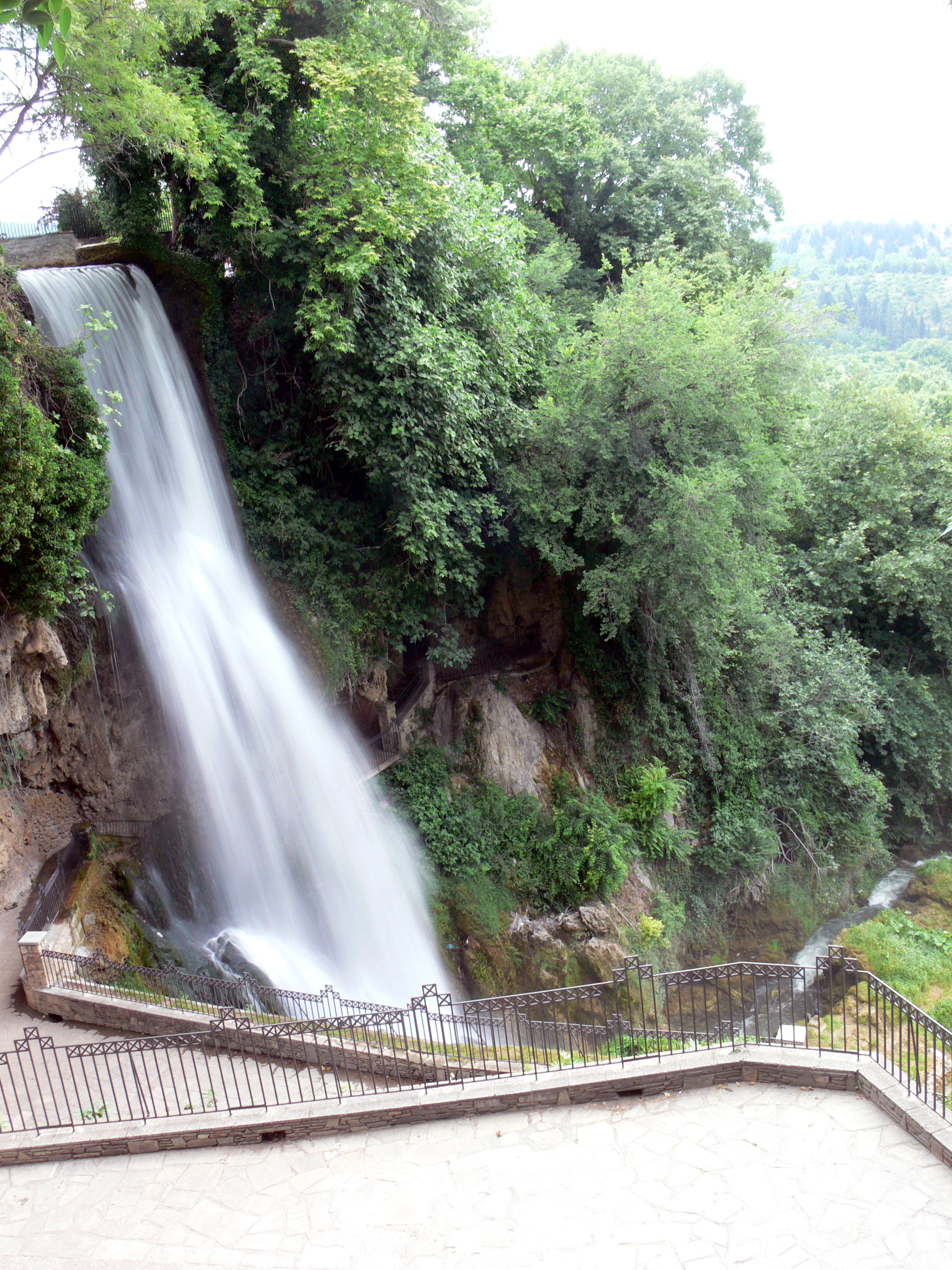- Edessa, Greece
Infobox Greek Dimos
name = Edessa
name_local = Έδεσσα
periph =Central Macedonia
prefec =Pella
population = 18253
population_as_of = 2001
area = 38.9
pop_municipality = 25619
area_municipality = 321.2
elevation = 320
lat_deg = 40
lat_min = 48
lon_deg = 22
lon_min = 3
postal_code = 582 00
area_code = 23810
licence = ΕΕ
mayor =
website = [http://www.edessacity.gr www.edessacity.gr]
caption_skyline = Edessawaterfall
city_
city_
districts =
party =
since =
elevation_min =
elevation_max =Edessa ( _el. Έδεσσα, "Édessa", IPA2|ˈe̞ðe̞sa; local Slavic: "Voden") is an ancient town of 25,000 inhabitants in Central part of Macedonia, in
Greece , and the capital of the Pella prefecture and is also the provincial capital of the province of the same name.Edessa is also the home of the
Marketing and Administration Department of theUniversity of Macedonia .Name
The name "Edessa" was ascribed an Illyrian origin by
Ulrich Wilcken , in his biography ofAlexander the Great (noted by Walter Bauer 1934; 1971; ch. 1), the "town of the waters", due to its copious water resources and its tourist attraction of thewaterfall s, located in the actual town center. The Ancient Greek name "Edessa" (Polytonic|Ἔδεσσα) was commemorated bySeleucus I Nicator in refounding an ancient city in northern Mesopotamia: seeEdessa, Mesopotamia . An alternative Greek name for the city is "Vodená"/Βοδενά", stemming from the Slavic name of the city "Voden"/Воден" (derived from "voda/вода", water). In Turkish, the city can be known as either "Edessa" , "Vodine" or "Vodina", and in Aromanian the city can be known as either "Edessa" , "Vudena" or "Vodina".History
Archaeological remains have been discovered on the site of ancient Edessa, just below the modern city. The walls and the
agora have been unearthed so far. A colonnade with inscription in Greek dates from Roman times. The city achieved certain prominence in the first centuries AD, being located on theVia Egnatia . From 27 BC to 249 AD it had its own mint. St. Vassa and her three children were put to death in the 3rd Century AD.Very little is known about the fate of the city after 500 AD. Its bishop Issidoros participated in the Ecumenical Council of 692. After the Slavic settlements of the 6th-8th century, the name of "Edessa" disappears and what remains of the city (a fortress in the acropolis of the ancient city) is renamed "Vodena". It is known as such to the 11th century Byzantine historian
John Skylitzes . It is mentioned as both Edessa and Vodena by emperor-historianJohn VI Kantakouzenos who laid siege to the city in the 1340s. Conquered by the Serbs ofStephen Dusan at that time, it fell to the Ottomans along with the rest of Macedonia around 1390.In the 1860s and later there was a clashes between Greek and Bulgarian communities in the town. [Vacalopulos, Konstandinos A. Modern history of Macedonia, Thessaloniki 1988, p. 52, 57, 64]
After more than 500 years of Ottoman rule, Edessa was liberated by the Greek Army on 18 October 1912. At that time, it was already well on its way to becoming a major industrial center in Macedonia. Four large textile factories were in operation by 1914, employing the abundant waterfalls as a source of energy. In addition, a large segment of the population specialised in silk production, allowing Edessa to enjoy a high standard of living in the interwar period (1922-1940). The region of Edessa was also populated in some extent by
Aromanians , but large numbers of Greek refugees fromAsia Minor where settled in the area after in 1923, after the population exchange between Greece and Turkey.The town suffered during the last days of German occupation in 1944. As a retaliation for the shooting of one soldier by resistance fighters, the Nazis put Edessa to fire. Half of the city, including the Cathedral and the First Primary School, were destroyed and thousands of people were left homeless.
For most of the
Greek Civil War Edessa was under communist control. The Slavic-Macedonian National Liberation Front, later simply the National Liberation Front or NOF was heavily established in the area. [ Simpson, Neil (1994). Macedonia Its Disputed History. Victoria: Aristoc Press, 105,106 & 94. ISBN 0646204629. ] By 1946, eleven Slav Macedonian partisan units were operating in the Edessa area. [ "Les Archives de la Macedonine, Fond: Aegean Macedonia in NLW" - (Field report of Mihail Keramidzhiev to the Main Command of NOF), 8 July 1945 ] The NOF had a regional commitee based in Edessa. When the NOF merged with theDemocratic Army of Greece (DSE), many Slav Macedonians in the region enlisted as volunteers in the DSE. [Η Τραγική αναμέτρηση, 1945-1949 – Ο μύθος και η αλήθεια. Ζαούσης Αλέξανδρος" (ISBN 9607213432). ] After the end of war in 1949, many pro-communists, including slavic speaking, were evacuated or fled to Yugoslavia and the Eastern Bloc. [ Simpson, Neil (1994). Macedonia Its Disputed History. Victoria: Aristoc Press, 101,102 & 91. ISBN 0646204629. ]In the postwar period Edessa gradually lost its competitive advantage in industry and declined economically and in population. In the beginning of the 21st century, it is a city based on services (mostly linked to its function as capital of the Pella Prefecture) and
tourism .Demographics
Communications
Television
*TAS
*Pella TV
*Egnatia TV Notable people
*
Marietta Chrousala (1983) fashion model and television presenteree also
*
List of communities of Pella Notes and references
*
F. Papazoglou , "Les villes de Macédoine romaine " = "The Cities of Roman Macedonia", BCH Suppl. 16, 1988, 127-131.
*Walter Bauer , "Orthodoxy and Heresy in Earliest Christianity", 1934, (in English 1971) ( [http://ccat.sas.upenn.edu/~humm/Resources/Bauer/bauer01.htm#FN1 On-line text] )External links
* [http://www.edessacity.gr/ Edessa official site]
* [http://www.pella.gr Pella Prefecture official site, containing useful information about Edessa]
* [http://odysseus.culture.gr/h/2/eh251.jsp?obj_id=1762 Hellenic Ministry of Culture: Old Cathedral of Edessa]
* Coordinates: coord|40|47|55|N|22|2|44|E|region:GR
Wikimedia Foundation. 2010.
